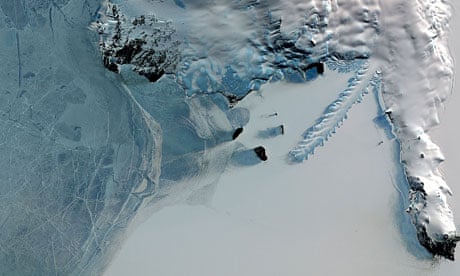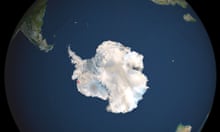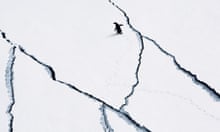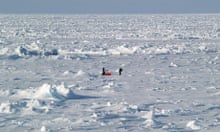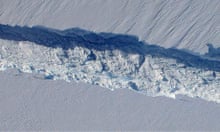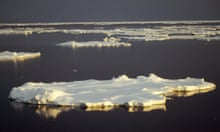Summer ice is melting at a faster rate in the Antarctic peninsula than at any time in the last 1,000 years, new research has shown.
The evidence comes from a 364-metre ice core containing a record of freezing and melting over the previous millennium.
Layers of ice in the core, drilled from James Ross Island near the northern tip of the peninsula, indicate periods when summer snow on the ice cap thawed and then refroze.
By measuring the thickness of these layers, scientists were able to match the history of melting with changes in temperature.
Lead researcher Dr Nerilie Abram, from the Australian National University and British Antarctic Survey (BAS), said: "We found that the coolest conditions on the Antarctic peninsula and the lowest amount of summer melt occurred around 600 years ago.
"At that time temperatures were around 1.6C lower than those recorded in the late 20th century and the amount of annual snowfall that melted and refroze was about 0.5%.
"Today, we see almost 10 times as much (5%) of the annual snowfall melting each year.
"Summer melting at the ice core site today is now at a level that is higher than at any other time over the last 1,000 years. And while temperatures at this site increased gradually in phases over many hundreds of years, most of the intensification of melting has happened since the mid-20th century."
Levels of ice melt on the Antarctic peninsula were especially sensitive to rising temperature during the last century, he said.
"What that means is that the Antarctic peninsula has warmed to a level where even small increases in temperature can now lead to a big increase in summer melt," Abram added.
Dr Robert Mulvaney, from the British Antarctic Survey, who led the ice core drilling expedition in 2008 and co-authored a paper on the findings published on Sunday in the journal Nature Geoscience.
He said: "Having a record of previous melt intensity for the Peninsula is particularly important because of the glacier retreat and ice shelf loss we are now seeing in the area.
"Summer ice melt is a key process that is thought to have weakened ice shelves along the Antarctic peninsula leading to a succession of dramatic collapses, as well as speeding up glacier ice loss across the region over the last 50 years."
The ice core record suggested a link between accelerated melting and man-made global warming. But a different and more complex picture has emerged from another region of Antarctica.
A separate US study, published in the same journal, shows that thinning ice from the West Antarctic Ice Sheet Divide cannot confidently be blamed on greenhouse gas emissions.
An ice core record from this site indicates a strong influence from unusual conditions in the tropical Pacific during the 1990s.
In that decade, an El Niño event – a cyclical system of winds and ocean currents that can affect the world's weather – caused rapid thinning of glaciers in the west Antarctic.
The spike in temperature was little different from others that occurred in the 1830s and 1940s, which also saw prominent El Niño events.
"If we could look back at this region of Antarctica in the 1940s and 1830s we would find that the regional climate would look a lot like it does today, and I think we also would find the glaciers retreating much as they are today," said lead author Prof Eric Steig, from the University of Washington.
He said the same was not true for the Antarctic peninsula, the part of the continent closer to South America. Here, more dramatic changes were "almost certainly" a result of human-induced global warming.
